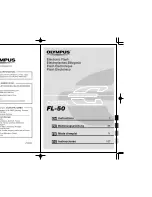
CM-140GE / -RA/-UV / CB-140GE / -RA
- 14 -
6. Input and output interface
6.1. GPIO interface
All input and output signals pass through the GPIO (General Purpose Input and Output) module.
The GPIO module consists of a Look-Up Table (LUT – Cross-Point Switch), 4 Pulse Generators and a
12-bit counter. In the LUT, the relationship between inputs, counters and outputs is governed by
internal register set-up.
LUT
( Cross Point Switch )
Pulse Generator 1
(20 bit Counter )
Pulse Generator 0
(20 bit Counter )
12 bit
Counter
TRIGGER 0
TRIGGER 1
PORT 1 1
PORT 2
Time Stamp Reset
LVAL IN
DVAL IN
FVAL IN
EEN IN
OPT IN 1
OPT IN 2
Soft Trigger 0
Soft Trigger 1
Soft Trigger 2
Soft Trigger 3
IN
OUT
Pulse Generator 0
Pulse Generator 1
Pulse Generator 0
Pulse Generator 1
Digital I/O(GPIO) setting
0
1
2
3
4
5
12
13
14
15
16
17
Digital I/O(GPIO) setting
0
1
4
5
16
12
13
Setting for
Line Source
Setting for
Line Selector
25 MHz
Pixel Clock
Counter Clock Source
0
1
Counter Divide by value
1/2 to 1/4096
Bypass
0
1 - 4095
Pulse Generator Setting 0
Start Point Counter 0 ( 1)
Length counter 0
Start Point Counter 0 (2) for repeat
End point counter 0
Counter 0 clear
Pulse Generator Setting 1
Pulse Generator 1
Pulse Generator 1
18
19
Pulse Generator 2
Pulse Generator 3
14
15
Pulse Generator Setting 2
Pulse Generator Setting 3
Pulse Generator 2
(20 bit Counter )
Pulse Generator 3
(20 bit Counter )
Fig.6 GPIO block
The input and output settings for the CM-140GE and CB-140GE series have been fixed as follows.
Line
Signal
Connector
Line 3
Optical Out 1
Hirose 12P pin # 7/8
Line 4
Optical Out 2
Hirose 12P pin # 9/10
Line 5
Optical In 1
Hirose 12P pin # 5/6
Line 6
Optical In 2
Hirose 12P pin # 3/4
6.1.1. LUT (Cross point switch) input and output setting
The LUT works as a cross-point switch which allows connecting inputs and outputs freely. The
signals LVAL_IN, DVAL_IN, FVAL_IN and EEN_IN all originate from the camera timing circuit.
Trigger 0 is connected to the camera's timing circuit and is used for initiating triggered exposure.
Trigger 1 is used for Delayed Readout mode.
The Time Stamp Reset signal is used to reset the camera's time stamp function, also making it
possible to reset and synchronize the time stamp of multiple cameras.
Содержание CB-140GE
Страница 61: ...CM 140 GE RA UV CB 140GE RA 59 ...
Страница 62: ...CM 140GE RA UV CB 140GE RA 60 ...
Страница 63: ...CM 140 GE RA UV CB 140GE RA 61 ...
Страница 64: ...CM 140GE RA UV CB 140GE RA 62 ...
Страница 68: ...CM 140GE RA UV CB 140GE RA 66 Fig 37 Spectral response for CM 140GE UV ...
















































